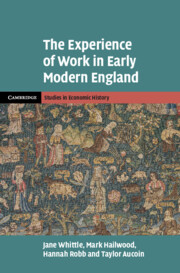Refine search
Actions for selected content:
26945 results in Economic history
Appendix: - Choosing and Using Historical Data
-
- Book:
- An Economic History of Europe
- Published online:
- 02 October 2025
- Print publication:
- 02 October 2025, pp 288-289
-
- Chapter
- Export citation
5 - Institutions and Efficiency
-
- Book:
- An Economic History of Europe
- Published online:
- 02 October 2025
- Print publication:
- 02 October 2025, pp 108-131
-
- Chapter
- Export citation
3 - Population and Resource Constraints
-
- Book:
- An Economic History of Europe
- Published online:
- 02 October 2025
- Print publication:
- 02 October 2025, pp 64-84
-
- Chapter
- Export citation
Copyright page
-
- Book:
- An Economic History of Europe
- Published online:
- 02 October 2025
- Print publication:
- 02 October 2025, pp iv-iv
-
- Chapter
- Export citation

Gold in India
- Commodity, Culture, and Economic Circuits
-
- Published online:
- 26 September 2025
- Print publication:
- 04 September 2025
Private lenders of last resort: the debates around central banking in Brazil in the 1920s
-
- Journal:
- Financial History Review , First View
- Published online by Cambridge University Press:
- 22 September 2025, pp. 1-21
-
- Article
-
- You have access
- Open access
- HTML
- Export citation

The Experience of Work in Early Modern England
-
- Published online:
- 19 September 2025
- Print publication:
- 09 October 2025
-
- Book
-
- You have access
- Open access
- Export citation

Peasant Economies and Societies in Ancient Roman Iberia
-
- Published online:
- 19 September 2025
- Print publication:
- 09 October 2025
-
- Element
- Export citation
Entrepreneurship capital in Spain and its impact on modern economic growth (1886–2000)
-
- Journal:
- Revista de Historia Economica - Journal of Iberian and Latin American Economic History , First View
- Published online by Cambridge University Press:
- 12 September 2025, pp. 1-26
-
- Article
-
- You have access
- Open access
- HTML
- Export citation
Argentina’s creditworthiness achievements and problems, 1955–1962: the role of institutions, policymakers, and external agents
-
- Journal:
- Revista de Historia Economica - Journal of Iberian and Latin American Economic History , First View
- Published online by Cambridge University Press:
- 12 September 2025, pp. 1-21
-
- Article
- Export citation
Tables
-
- Book:
- Gold in India
- Published online:
- 26 September 2025
- Print publication:
- 04 September 2025, pp xiii-xiv
-
- Chapter
- Export citation
4 - Goldsmithery and Goldsmiths: How India’s Informal Gold Jewellery Manufacturing Sector Works
-
-
- Book:
- Gold in India
- Published online:
- 26 September 2025
- Print publication:
- 04 September 2025, pp 184-208
-
- Chapter
- Export citation
Glossary
-
- Book:
- Gold in India
- Published online:
- 26 September 2025
- Print publication:
- 04 September 2025, pp 338-342
-
- Chapter
- Export citation
Contents
-
- Book:
- Gold in India
- Published online:
- 26 September 2025
- Print publication:
- 04 September 2025, pp vii-viii
-
- Chapter
- Export citation
About the Contributors
-
- Book:
- Gold in India
- Published online:
- 26 September 2025
- Print publication:
- 04 September 2025, pp 343-346
-
- Chapter
- Export citation
3 - Gold and Money Laundering in India
-
-
- Book:
- Gold in India
- Published online:
- 26 September 2025
- Print publication:
- 04 September 2025, pp 150-183
-
- Chapter
- Export citation
8 - Malabar Gold: Relational, Reproductive Saving, Gendered Property and Wealth Accumulation among Kerala Muslims
-
-
- Book:
- Gold in India
- Published online:
- 26 September 2025
- Print publication:
- 04 September 2025, pp 291-311
-
- Chapter
- Export citation
5 - Gold Trade And Gold Traders: The Subarnabaniks of Bengal
-
-
- Book:
- Gold in India
- Published online:
- 26 September 2025
- Print publication:
- 04 September 2025, pp 209-236
-
- Chapter
- Export citation
Figures
-
- Book:
- Gold in India
- Published online:
- 26 September 2025
- Print publication:
- 04 September 2025, pp ix-xii
-
- Chapter
- Export citation
2 - A New Sheen to the Barbarous Relic? A Long View of Monetary Gold in India
-
-
- Book:
- Gold in India
- Published online:
- 26 September 2025
- Print publication:
- 04 September 2025, pp 79-149
-
- Chapter
- Export citation
